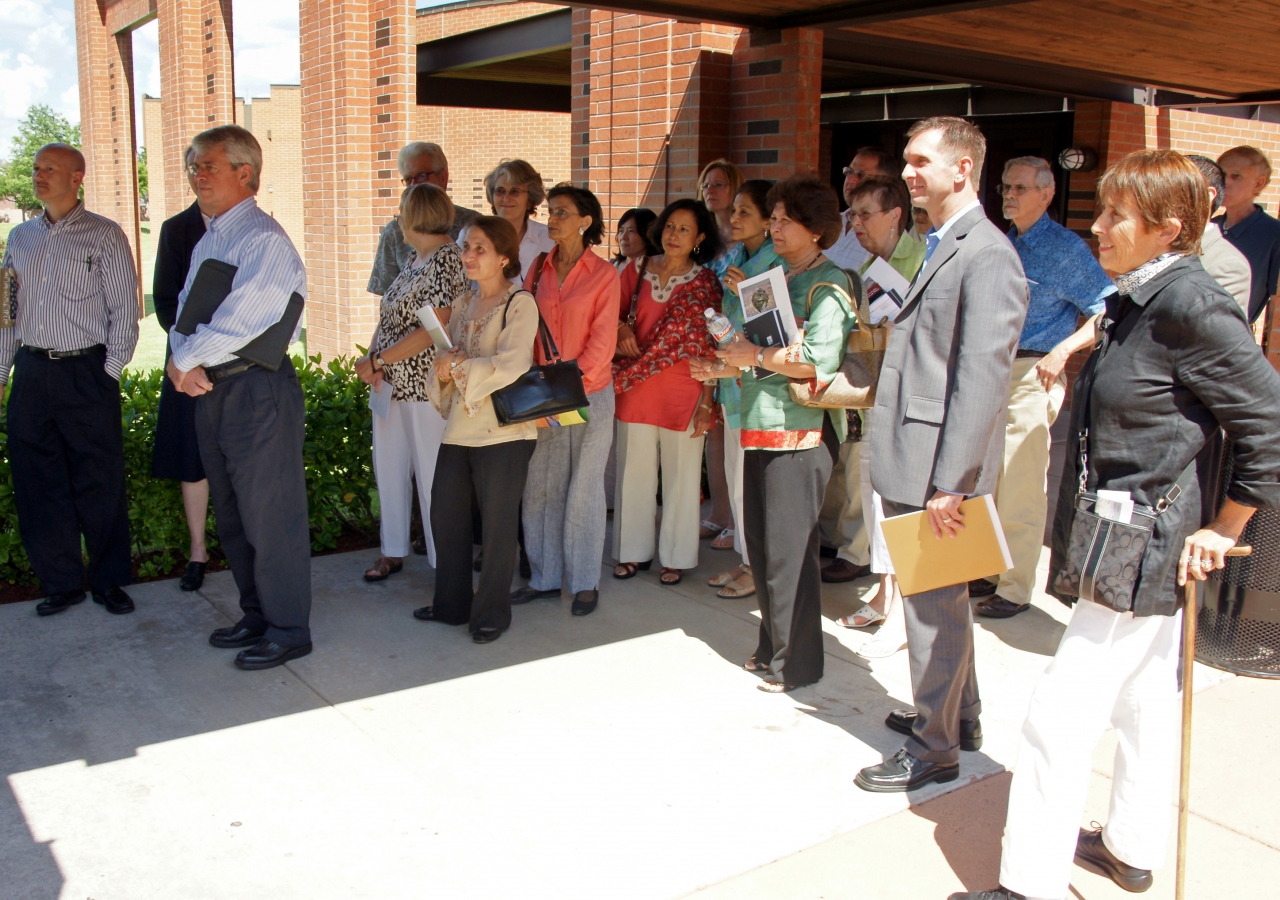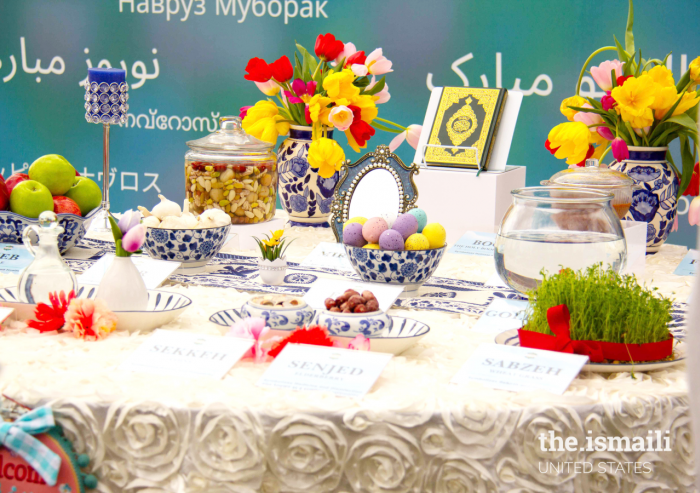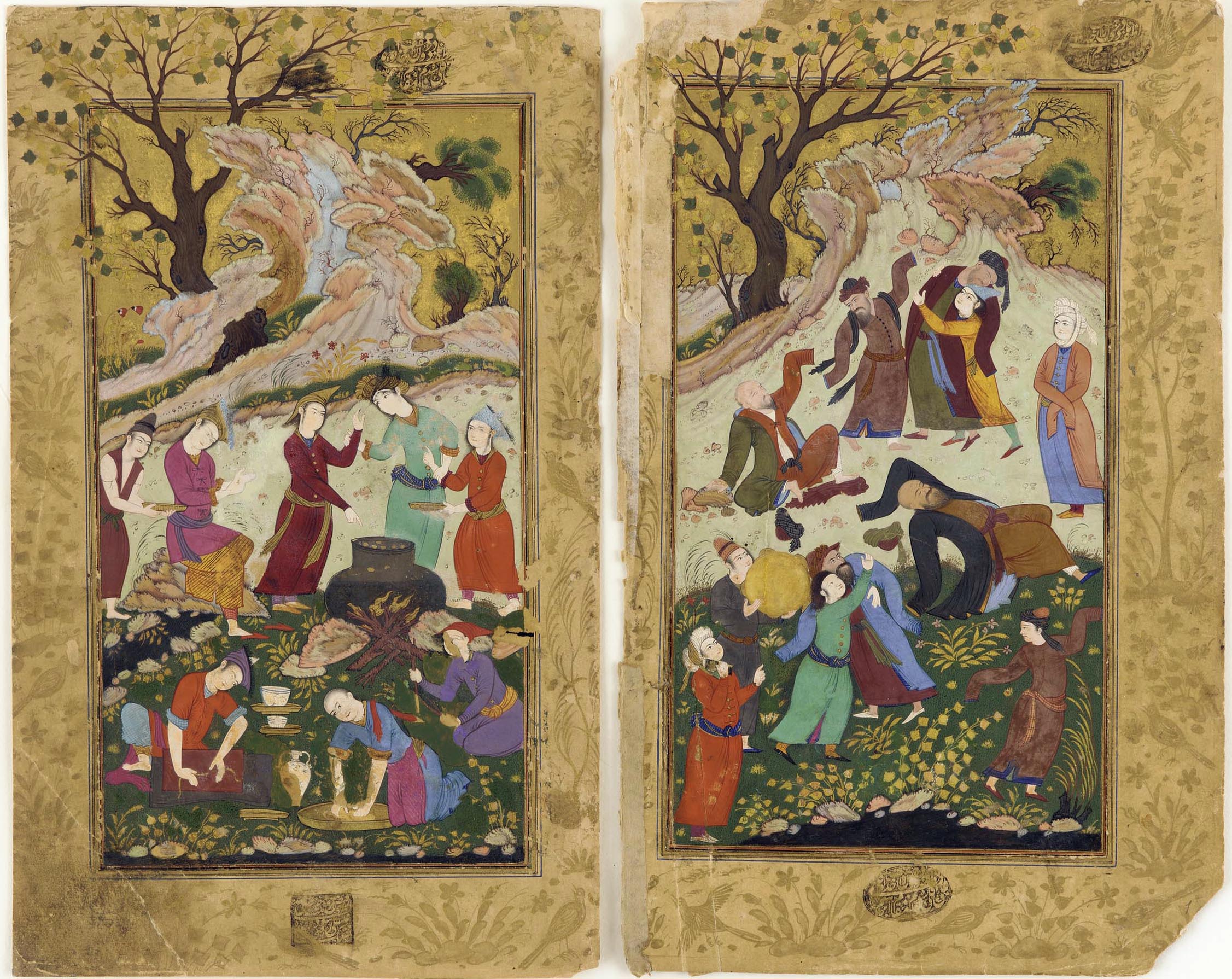 Copied by Mir ‘Imad; “Dancing Dervishes”, Double-page composition from an illustrated manuscript of the “Gulistan (Rose Garden)” of Sa'di, Iran, ca. 1615; Opaque watercolor, ink, and gold on paper (26.9 x 16.4 cm). Lent by the Art and History Collection; Courtesy of the Arthur M. Sackler Gallery, Smithsonian Institution, Washington, DC: LTS1995.2.174.1-.2
Copied by Mir ‘Imad; “Dancing Dervishes”, Double-page composition from an illustrated manuscript of the “Gulistan (Rose Garden)” of Sa'di, Iran, ca. 1615; Opaque watercolor, ink, and gold on paper (26.9 x 16.4 cm). Lent by the Art and History Collection; Courtesy of the Arthur M. Sackler Gallery, Smithsonian Institution, Washington, DC: LTS1995.2.174.1-.2From the intricacy of calligraphy and the mysticism of Sufi dance, to the illustrative legends that explode on canvas, Islamic art forms have captured the attention of Houstonians. In May and June, the Houston Ismaili community collaborated with the Museum of Fine Arts, Houston (MFAH) during its exhibition Light of the Sufis: The Mystical Arts of Islam, to organise educational events that explored and celebrated artistic traditions of the Muslim world.
Art in all of its forms is a universal language that transcends cultural barriers. Light of the Sufis focuses on essential Sufi ideas and practices that find expression in art. Featuring a range of objects from as far back as the 9th century as well as contemporary pieces, the exhibition includes furnishings used for mosque lighting, representations of Sufi mystics such as photographs of dervishes, and illustrated laser-etched manuscripts of Sufi poetry.
On 21 May, Dr Michael Barry, Lecturer in Near Eastern Studies at Princeton University, delivered a lecture at MFAH titled, Rumi and the Imagery of the Sufis. Mawlana Jalal al-Din Rumi was one of the most prominent figures of medieval Sufism and the spiritual father of the Mevlevi order. The lecture was co-sponsored by the Ismaili Council for the Southwestern United States.
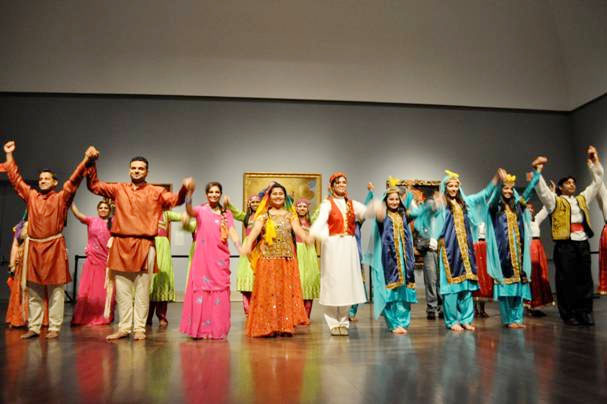 Ismaili youth present a “Jubilee Dance” at the Museum of Fine Arts, Houston on 21 May. Courtesy of the Ismaili Council for SW USA
Ismaili youth present a “Jubilee Dance” at the Museum of Fine Arts, Houston on 21 May. Courtesy of the Ismaili Council for SW USAThat same day, 24 Ismaili Muslim youth danced before a full house at the MFAH. Their performance celebrated the plurality and diversity that exists within the Muslim world. The dance took the audience on a vibrant journey of cultures with routines from South-East Asia, Tajikistan, Afghanistan, Syria, Iran, and the United States of America.
The mystical aspect of Islam has also been a source of inspiration to visual art and architecture of the Muslim world. On 19 June, Dr Francesca Leoni, Assistant Curator of the Arts of the Islamic World at the MFAH, spoke about the beauty and sophistication of Islamic Art at the Houston Principal Ismaili Jamatkhana and Center.
“Beautiful writing is a mirror of a beautiful soul,” said Dr Leoni, as she explained the concept of Islamic calligraphy. Writing might be considered the “queen of Islamic arts,” she added.
Dr Leoni also focused on geometry and arabesque, which feature prominently in art forms of the Muslim world. She noted that while arabesque patterns are vegetal scrolls of leaves and flowers, geometric patterns provide rhythm, harmony, and balance in both art and architecture. Following her presentation, members of the audience toured the Ismaili Jamatkhana and Center, which is itself an example of Muslim architecture built in a western context.
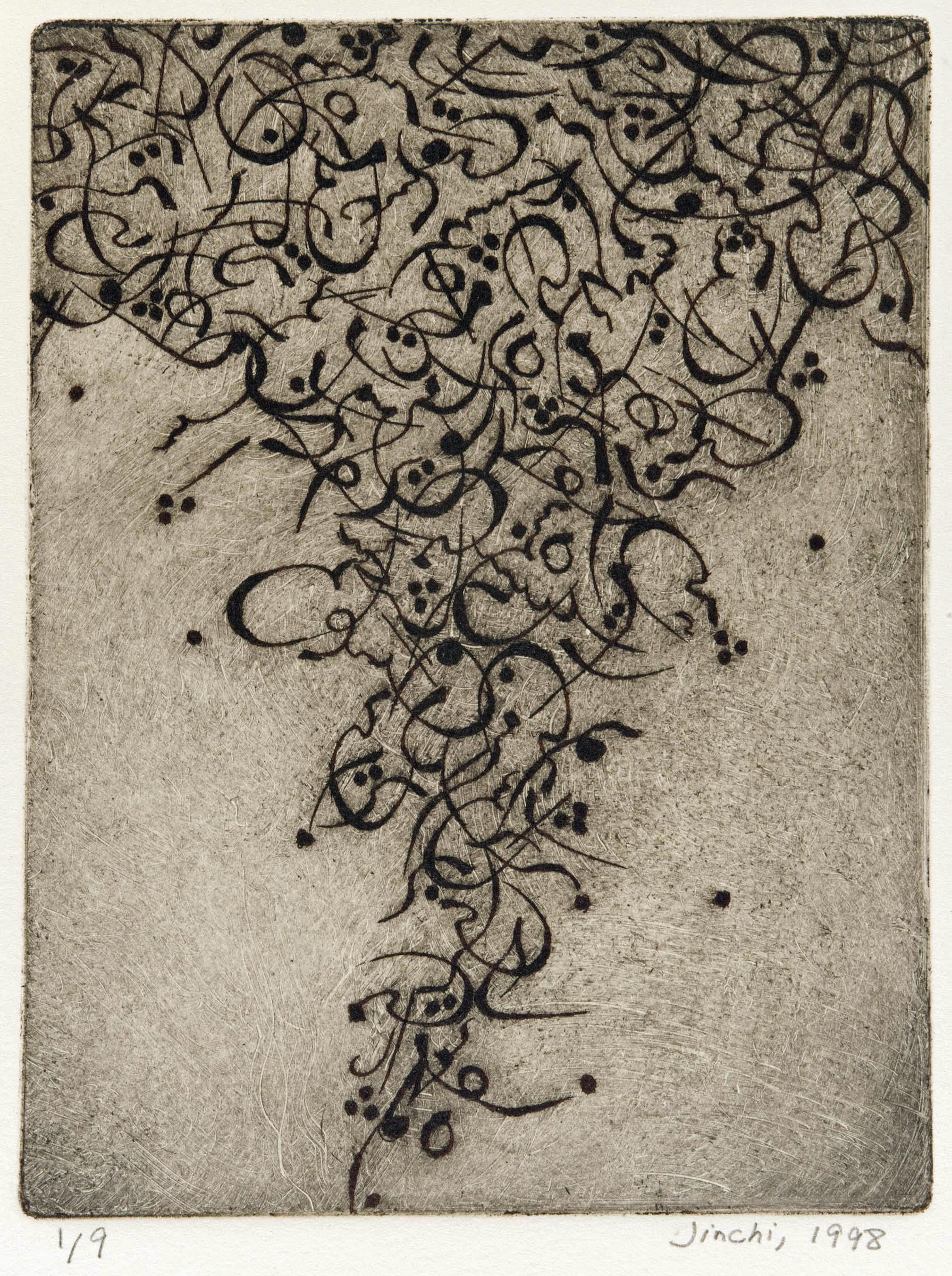 Pouran Jinchi (Iranian, born 1959); Untitled, 1998; Etching on paper (28 x 25.9 cm). Arthur M. Sackler Gallery, Smithsonian Institution, Washington DC: Gift of Bertram Schnaffner, MD, S.2000.121 © Pouran Jinchi, courtesy Art Projects International, New York.
Pouran Jinchi (Iranian, born 1959); Untitled, 1998; Etching on paper (28 x 25.9 cm). Arthur M. Sackler Gallery, Smithsonian Institution, Washington DC: Gift of Bertram Schnaffner, MD, S.2000.121 © Pouran Jinchi, courtesy Art Projects International, New York.Many Ismaili Houstonians engage in interfaith dialogues and learning projects. The Boniuk Center for Religious Tolerance at Rice University recently held an event to present an alternative portrait of Islam through a programme titled “Houston's Many Faces of Islam.” Shaida Adatia was part of a diverse panel of Muslim Houstonians, and spoke about her experiences as an Ismaili Muslim living in Houston. Additionally, Congregation to Congregation (C2C), a project of the Interfaith Ministries of Greater Houston, provides an opportunity for people to learn about one another's faiths. Shia Ismaili Muslims are one of 28 congregations currently participating in the project.
The Ismaili community in Houston has worked closely with the MFAH since January 2003. The positive relationship that has developed has led to regular partnerships on various collaborative efforts such as lectures, films, and family days, which highlight the significance of Islamic art and culture.
“The Ismaili community has sought to represent itself and the larger Muslim world by sponsoring these lectures about the great artistic achievements in architecture, art, and literature of the tradition and its multicultural heritage to the communities in which they are living,” said Garland Pohl, a regular attendee at many of the museum lectures. “These positive aspects of the impact of Islam on the world carry the tradition to a higher level of appreciation in the non-Muslim world.”

